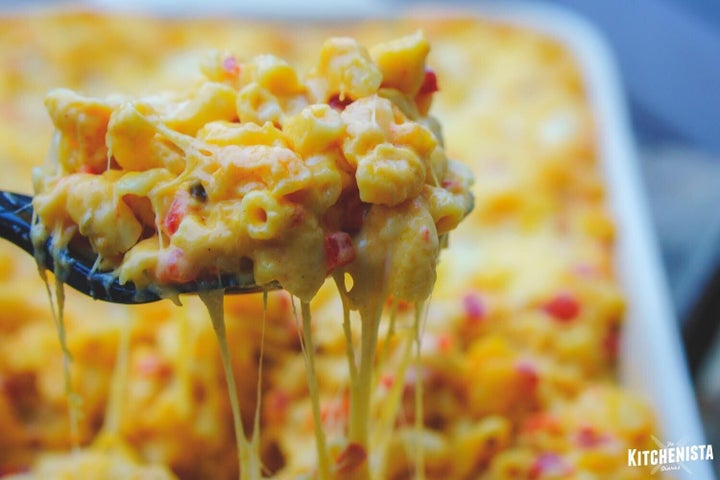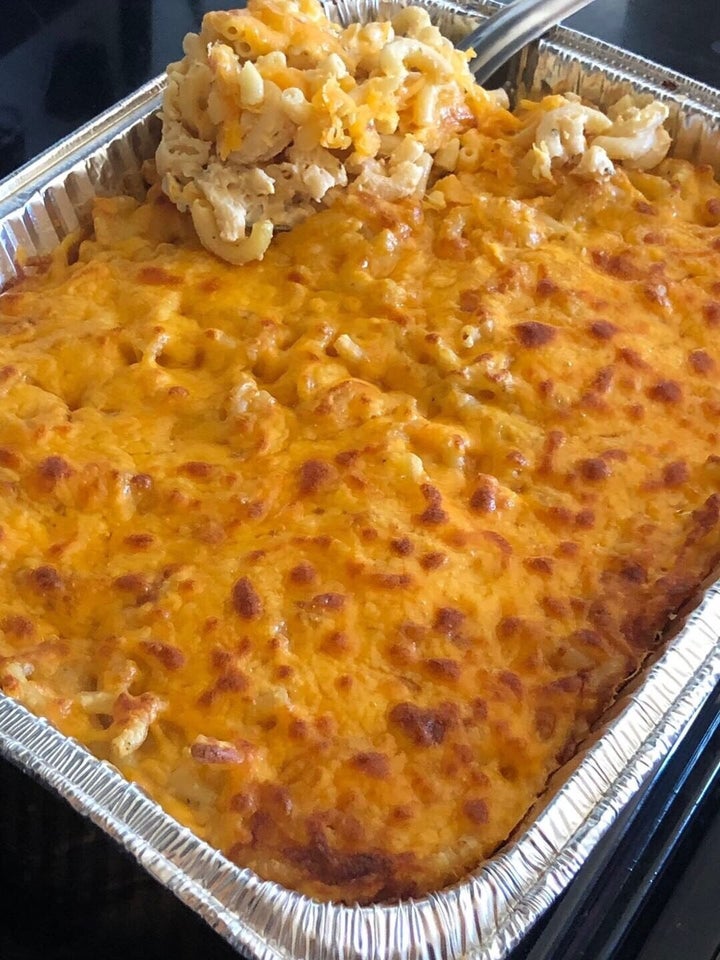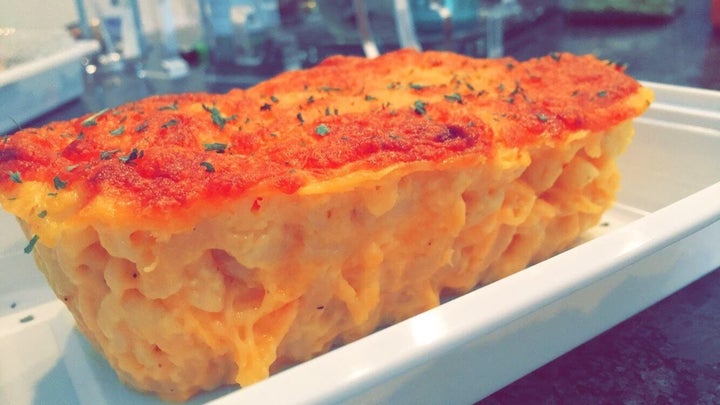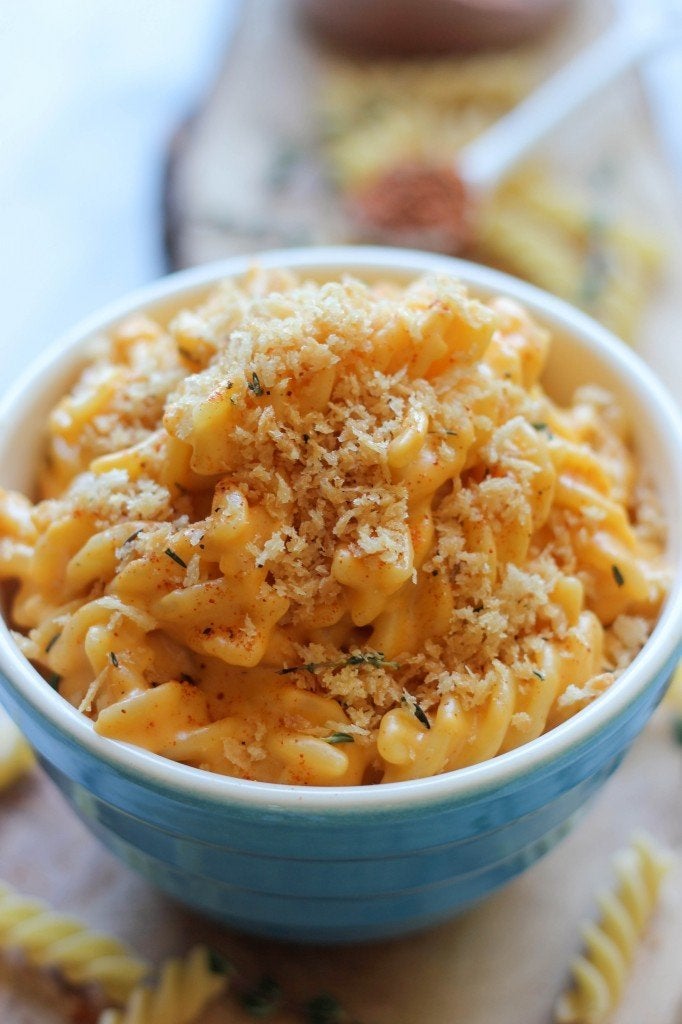Scrolling through Instagram one day, I happened upon a cooking video by Delish on my Explore page. It showed a pile of wet, overly sauced noodles in a slow cooker, and it took me a while to realize it was being deemed macaroni and cheese. And then, something else happened: The cook added cream cheese.
Oh, hell nah.
As a black American, I believe macaroni and cheese is not just any side you throw together and serve to the masses. It’s the side dish that, when done properly, makes you grab some aluminum foil and extra plates so you can tuck it away to take home later. You know it’s been a successful event when the pan is empty and you find someone scraping the remnants of cooked cheese from the sides of the tray.
But it’s also a dish that, if forgotten, can get you ousted from a familial get-together. And if you get it wrong, you’ll forever be known as the one who brought the white-people mac and cheese, which isn’t meant to cast shade but speaks to how recipes differ, and severely so.
In European culture, the earliest recipe for mac and cheese is traced to “Liber de Coquina,” a book written in the 14th century. This medieval cookbook contains a recipe called “de lasanis” for a lasagna-style layered mac and cheese. In America, mac and cheese is said to have been served at a presidential state dinner in 1802 after Thomas Jefferson became fond of noodle recipes and brought a pasta machine back from Europe. Jefferson’s slave chef James Hemings produced the dish, which Kraft turned into a processed boxed version in 1937.
The version of mac and cheese in the Instagram video looked nothing like these original versions likely did, nor anything like the version I grew up with. It plagued my spirit to the point that I felt the need to enlist the pros.
I just had to know: In black culture, what is the real deal of mac and cheese recipes? Surprisingly, the answers of three black culinary professionals I spoke to varied.
When posing the question to self-taught food blogger Angela Davis, affectionately known by her nearly 100,000 social media followers as ”The Kitchenista,” she made it clear she’s not a fan of stovetop mac and cheese. As a native of the South, Davis is no stranger to mac and cheese that would make you want to, in her words, “slap your mama!”
“The ideal mac and cheese has a creamy sauce that clings to the noodles, rich cheese flavor made from a variety of cheeses, well-seasoned, a little bit gooey with a stringy cheese pull effect,” Davis told HuffPost. “Al dente elbow or cavatappi noodles are my go-to.” She added that she prefers baking her mac to give it a crispy layer, and for additional flavor points, she’ll add a “light layer of crispy buttered bread crumbs.”
As far as cheese is concerned, Davis said, “Never [use] sliced cheese, and Velveeta isn’t necessary at all if you start with a bechamel sauce and melt real shredded cheese into it. The flavor is much better that way and the sauce stays smooth without curdling when baked.”
She added that the wrong pasta shape, such as bowtie, is a complete no-no, and shared her thoughts on what is not an ideal recipe.
“It goes without saying, but anything in a box is a no for me. Also, if the mac and cheese is dry, uses artificial cheese flavor, has no seasonings, or is veganized, consider that an ultimate no.”
Chef Joel Mays III, a private chef who provides meal prep and catering to clients including NFL players, has strong thoughts about what makes the ideal mac and cheese … and what doesn’t.
“Mac and cheese is not in a box, it’s not a block of cheese. It’s not in a can or microwaveable. That’s not ideal,” Mays told HuffPost. “You have to take steps to make a cheese sauce, a roux, and spray your pan so the pasta does not stick. You have to bake the mac and cheese or sauté it with the cheese sauce and add fresher shaved cheese at the end. Those cooking methods are preferred when it comes to this dish.”
Mays even described how a proper mac and cheese should look: “Macaroni and cheese should look like a bed of cheese hills and valleys covering the pasta, surrounded with the crispy edges from the pan. It always needs pepper, salt and garlic, the three spices that are the base of everything in this amazing cheesy concoction. Cheeses need to include cheddar, mozzarella, colby jack and for heat, pepper jack … or havarti cheese for a little sweet note that tickles your tongue and makes you go back for seconds.”
Chef Meagan Collins, a personal chef based in Atlanta, told HuffPost, “When I think of black people’s version of mac and cheese, two words come to mind: cheesy and gooey. We flavor the pasta and cheese sauce, but with other seasonings besides salt. The cheese sauce could be made with a multitude of things such as butter, milk, condensed milk, seasonings, a roux mixture, shredded cheese and freshly grated cheese.”
In the same breath, Collins defined what she believes isn’t the black version of mac and cheese: “bland and breadcrumbs.” While Davis uses them to add additional flavor, Collins doesn’t like the texture. Mays believes the breadcrumbs create a more restaurant-style version of the dish ― he’s not opposed to them but believes the cheese should be the star of the show.
Ultimately, the pros schooled me on the fact that only slight changes make the dish lean more toward a black family reunion-approved casserole and away from the white co-worker Thanksgiving potluck version. One particular no-no is adding superfluous ingredients like tomatoes, cauliflower or onions.
Overall, these pros affirm that in their culture, the following mac and cheese sins are all valid reasons for your cookout invite to get lost in the mail: not enough flavor or seasoning, mushy or oddly shaped noodles, artificial cheese, mac from a box or soupy, stovetop mac and cheese.
Source: Read Full Article



